1906 Humorous Phases of Funny Faces
Humorous Phases of Funny Faces: The First Animated Film?
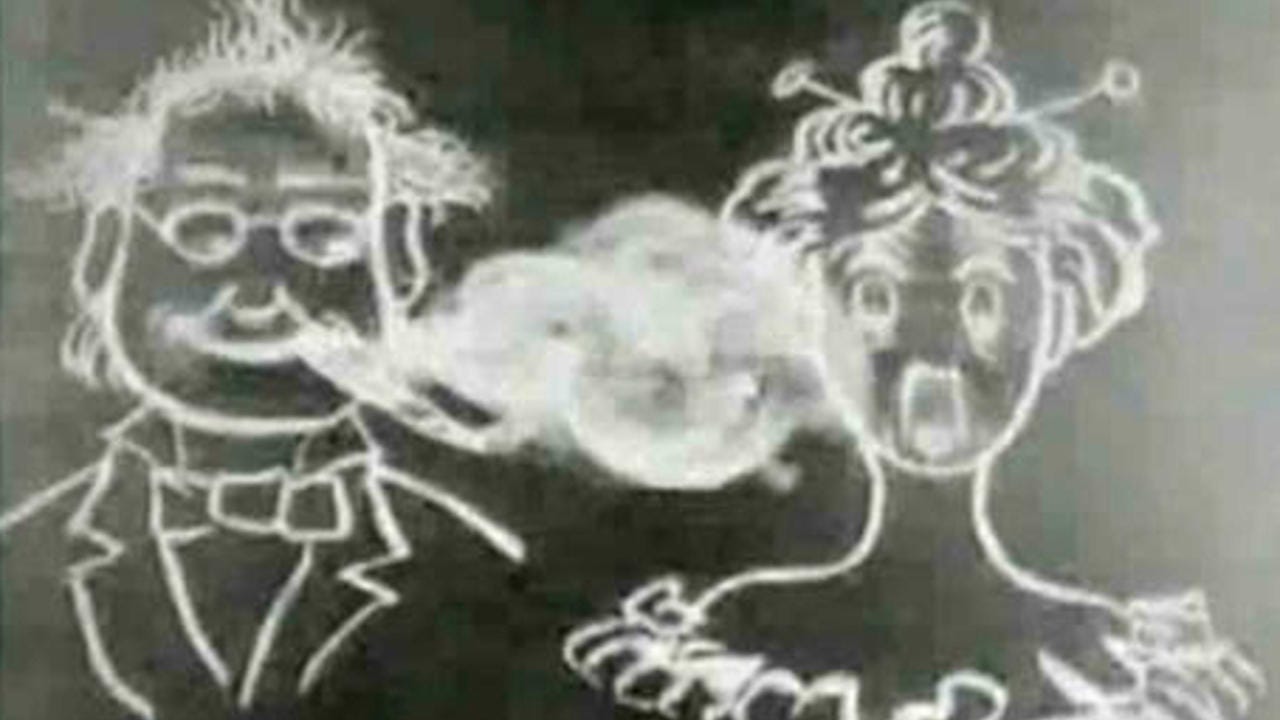
Note: This is the fortieth in a series of historical/critical essays examining the best in film from each year. Essentially, I am watching films from the beginning of cinematic history that interest me and/or hold some critical or cultural impact. My personal, living list of favorites is being created at Mubi , showcasing five films per year. All this being explained, what follows is an examination of my fifth favorite 1906 film, HUMOROUS PHASES OF FUNNY FACES, directed by J. Stuart Blackton.
HUMOROUS PHASES OF FUNNY FACES (1906) is often cited as the first animated film. As I pointed out in my recent essay on THE STORY OF THE KELLY GANG (1906), what can solidly be called the first feature-length film, most "firsts" usually do have an asterisk affixed to them. Generally, these asterisks get lost in the shuffle, leading to bigger claims that aren't necessarily true. In that spirit, more accurate descriptors of HUMOROUS PHASES call it the first animated film recorded on standard picture film. Even still, that claim could be disputed.
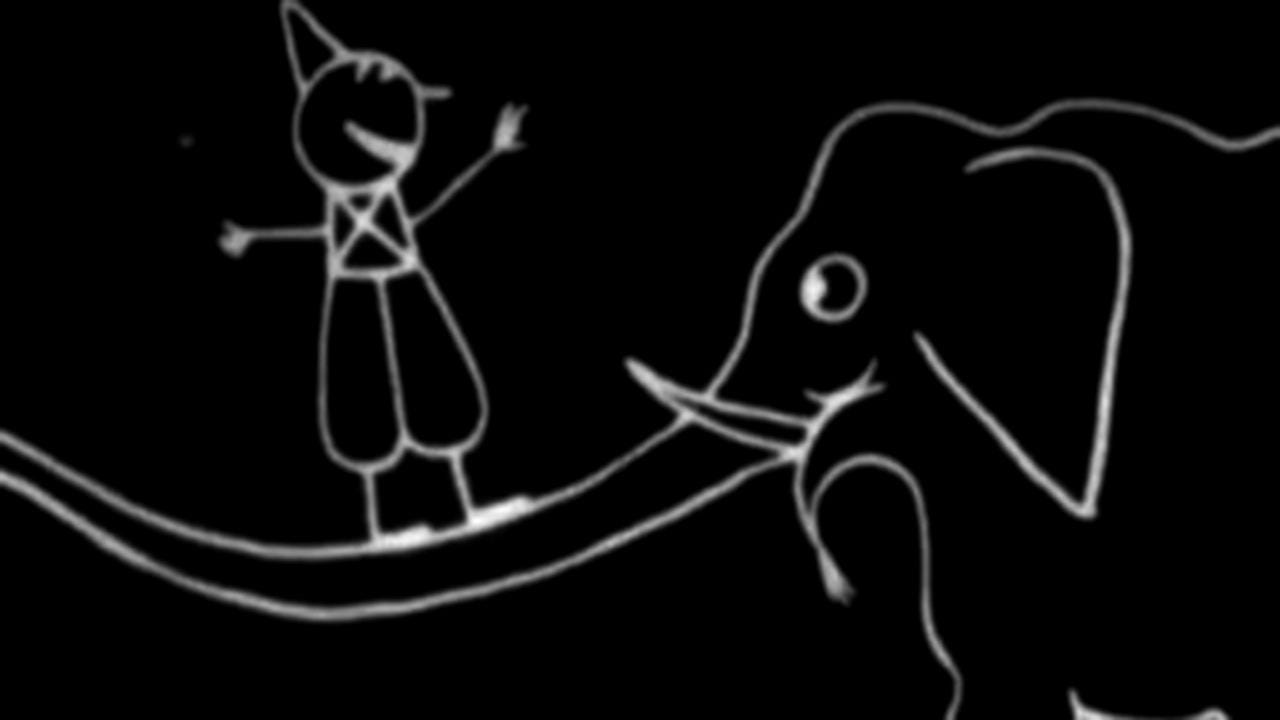
Animation had been done in "film" before, but it hadn't really been done in what we now call traditional (hand-drawn) animation. In fact, HUMOROUS PHASES itself doesn't really fall into that category. HUMOROUS PHASES is a product of stop-motion and cutout techniques; they had been displayed in some form since the 1890s. The first traditionally animated film is FANTASMAGORIE (1908), which I'll write about later. But some form of animation goes back to the near beginning of film, and from some of the art form's earliest cinematic pioneers.
The idea of "moving pictures" comes before film, when magic lanterns and other optical trick devices would "animate" drawings and images, creating motion. That's the basis of film itself, but of course we don't refer to animation simply as the rapid flashing of still images (or frames) into motion. Implied in the current term of animation is the manipulating of things that can't move into, well, moving, whether it be drawings or tactile, real-world items. In fact, the latter, what we now call stop-motion animation, had a stronger tradition in the short history of film by the time FANTASMAGORIE came out.
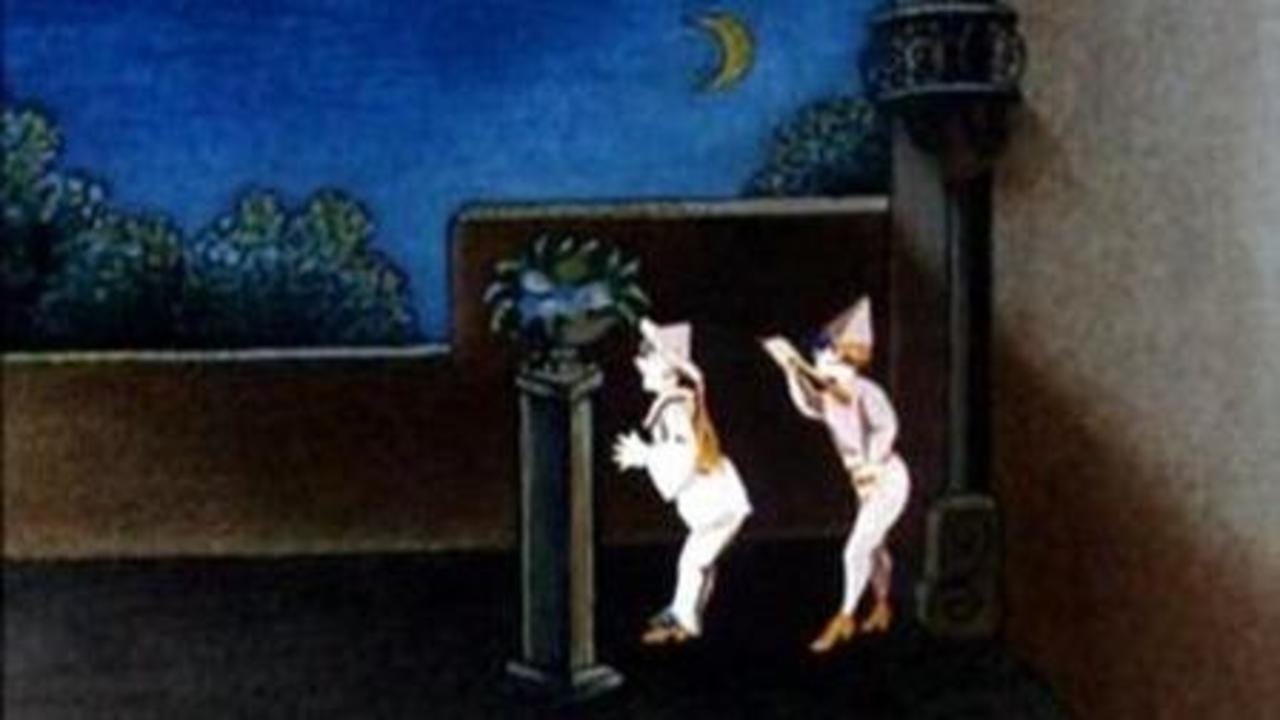
However, some of the earliest experiments in animation came from a pair of my favorite films from before 1900, PAUVRE PIERROT (1892) and AUTOUR D'UNE CABINE (1894). They were made by French film pioneer Charles-Émile Reynaud, whose praxinoscope device was an offshoot of the formative zoetrope. It spun a series of images around a spinning cylinder, shining light from the center to project the images, and the movement they simulated, outwards. Since the images were drawn by Reynaud, rather than photographed, his films were essentially animated, in the traditional sense of the word.
The films, as they appear now, are rendered in a way we understand films now, but the way they were presented definitely did not run as smoothly, nor were they even made on film. Nevertheless, they are an important part of the "pictures," and as indicated by my including it on my favorite films list, should be considered as such. But their "shortcomings" also strengthen the case of HUMOROUS PHASE's landmark status…except for another film, made six years earlier by HUMOROUS PHASES director J. Stuart Blackton himself.
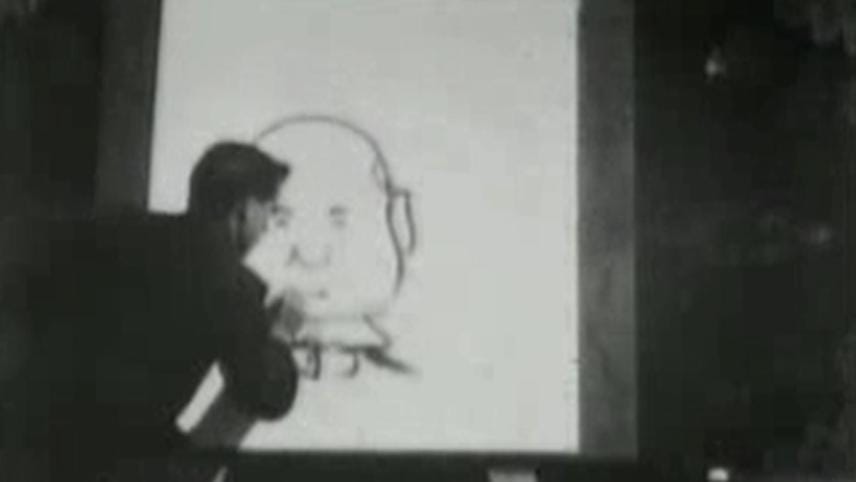
Blackton, essentially "the father of American animation," is actually a pretty significant figure from the entire early film industry. Originally a reporter/entrepreneur from Britain, American immigrant Blackton interviewed Edison about his fancy new moving pictures and was coerced into buying a camera and a set of films to exhibit. Along with his partner Albert E. Smith, Blackton soon branched out into making films himself, creating American Vitagraph Company in 1897. It would become Vitagraph Studios, one of the leading studios in the American film industry until about the mid-1910s; it was purchased by Warner Bros. in 1925.
Besides making a name for itself with newsreels (propaganda) of the Spanish-American War (supplemented by staged studio scenes), some of Vitagraph's later big hits were literary adaptations, often directed by Blackton himself. His earliest successes, however, toyed more specifically with stop-motion animation. Blackton would later look back on his little experiments as amateurish and inconsequential, but his 1900 film THE ENCHANTED DRAWING may beat out HUMOROUS PHASES as the first animated film recorded on standard picture film…if you consider brief animated sequences in a minute-and-a-half live action film an animated film.
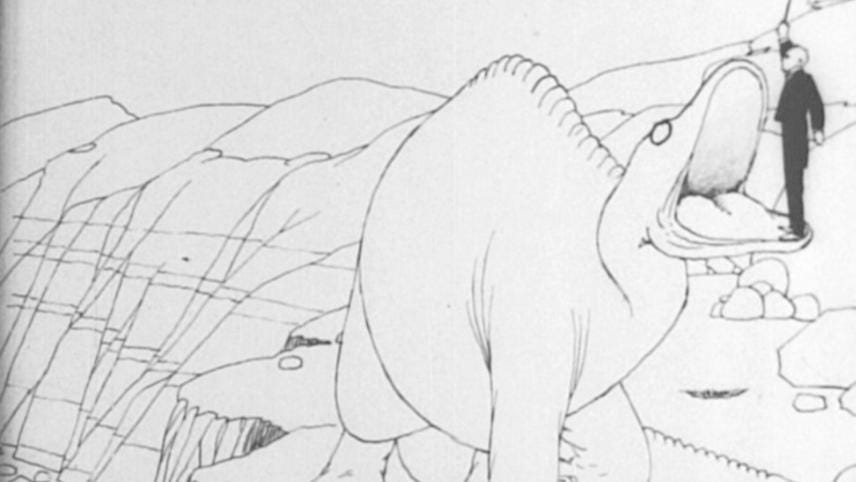
THE ENCHANTED DRAWING showed Blackton drawing a man on an easel, and with little substitution splices, his drawings would become real world items or the man's expression would change. This technique was perfected, if not invented, by Georges Méliès, but almost entirely with live-action subjects. These splices were used to create magical effects, and the substitution in THE ENCHANTED DRAWING is no different.
Film was playing with ideas that couldn't be done in any other medium, even if they look simple now. THE ENCHANTED DRAWING, too, established a common trend of animation films being presented, in the narrative, as the creation of an artist, rather than worlds of their own. This trend would continue with HUMOROUS PHASES itself, Winsor McCay's 1910s masterpieces, and even into the 1920s with the Fleischer Brothers' OUT OF THE INKWELL series, a reliance on the vaudeville and trick film traditions associated with filmmaking well into the 20th century.
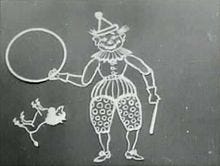
In any event, THE ENCHANTED DRAWING could probably not be accurately called an animated film. It's primarily live-action, and its tricks are not dissimilar to those seen in Méliès' films, which are not considered animated in spite of common animation tricks being used in them. HUMOROUS PHASES OF FUNNY FACES, then, looks like it deserves its somewhat intricate first claim.
In spite of a hand flitting in and out frame to illustrate the events of the film, HUMOROUS PHASES is presented with the animation and drawing as the focus. The three minute film is a series of brief "humorous" moments between, primarily, a man and a woman, presented on a chalkboard. The black background and distinctive white outlines of the drawings, while simplistic, is a great, striking look. The drawings themselves are fun little caricatures, even if the film is not exactly hilarious. I guess humorous is fitting; the film is simply amusing.
Its place in animation history, a topic I am incredibly fascinated by, is another story. While its stop-motion and cutout techniques create a stilted effect, the simple fascination with the movement of illustrated characters, seemingly of their own accord, is still fresh for a 111-year-old film. HUMOROUS PHASES OF FUNNY FACES would be improved upon quickly and substantially by other animation pioneers within even the next five years, but it's essentially the first animated film in the way we could consider them today. That power and significance can't be understated, making it my fifth favorite 1906 film.
Make sure to catch up on and keep up with all of my essays on my favorite films here.
Source: https://trettleman.medium.com/humorous-phases-of-funny-faces-the-first-animated-film-d2ac1fcf4e20
0 Response to "1906 Humorous Phases of Funny Faces"
Post a Comment